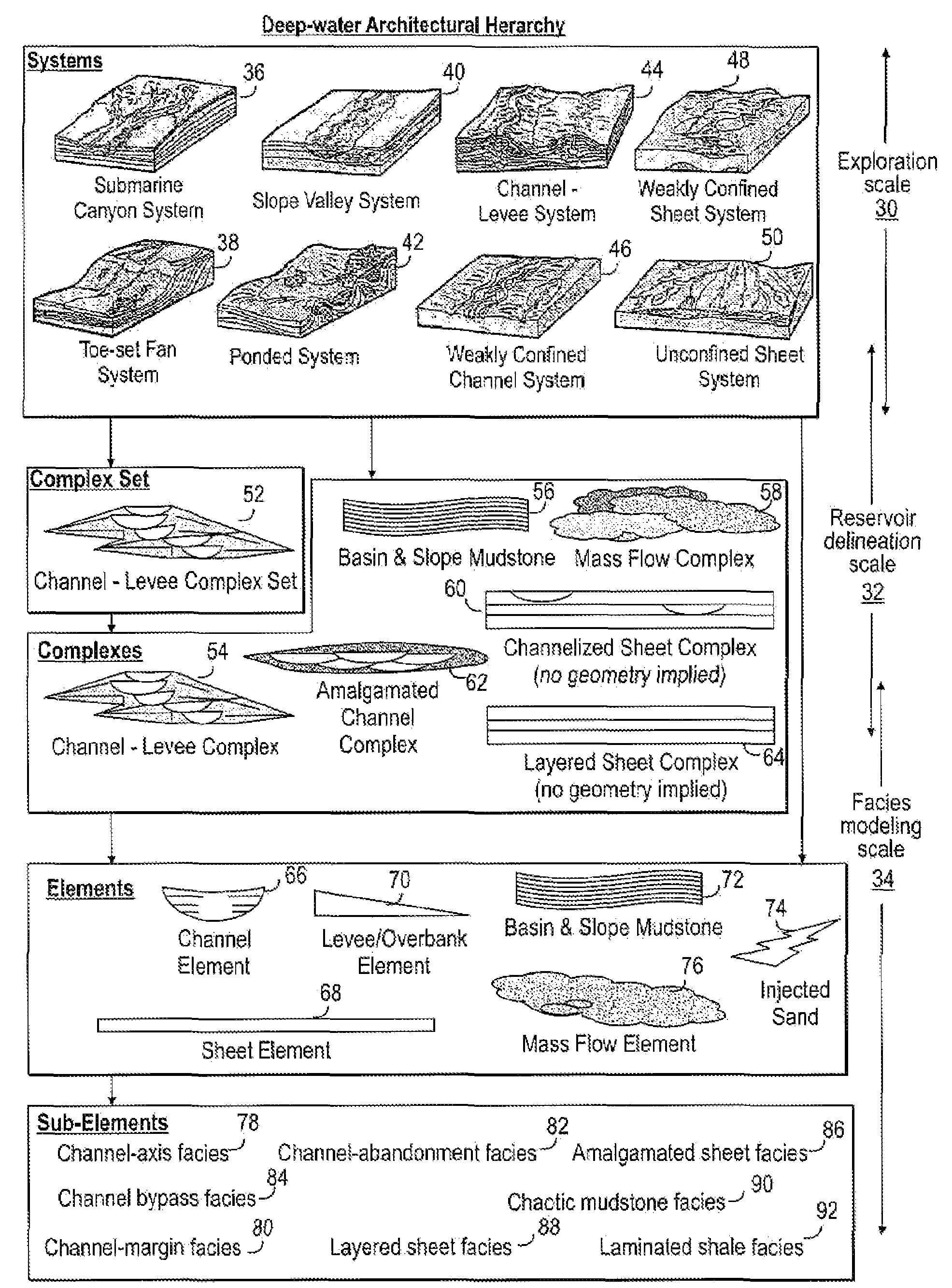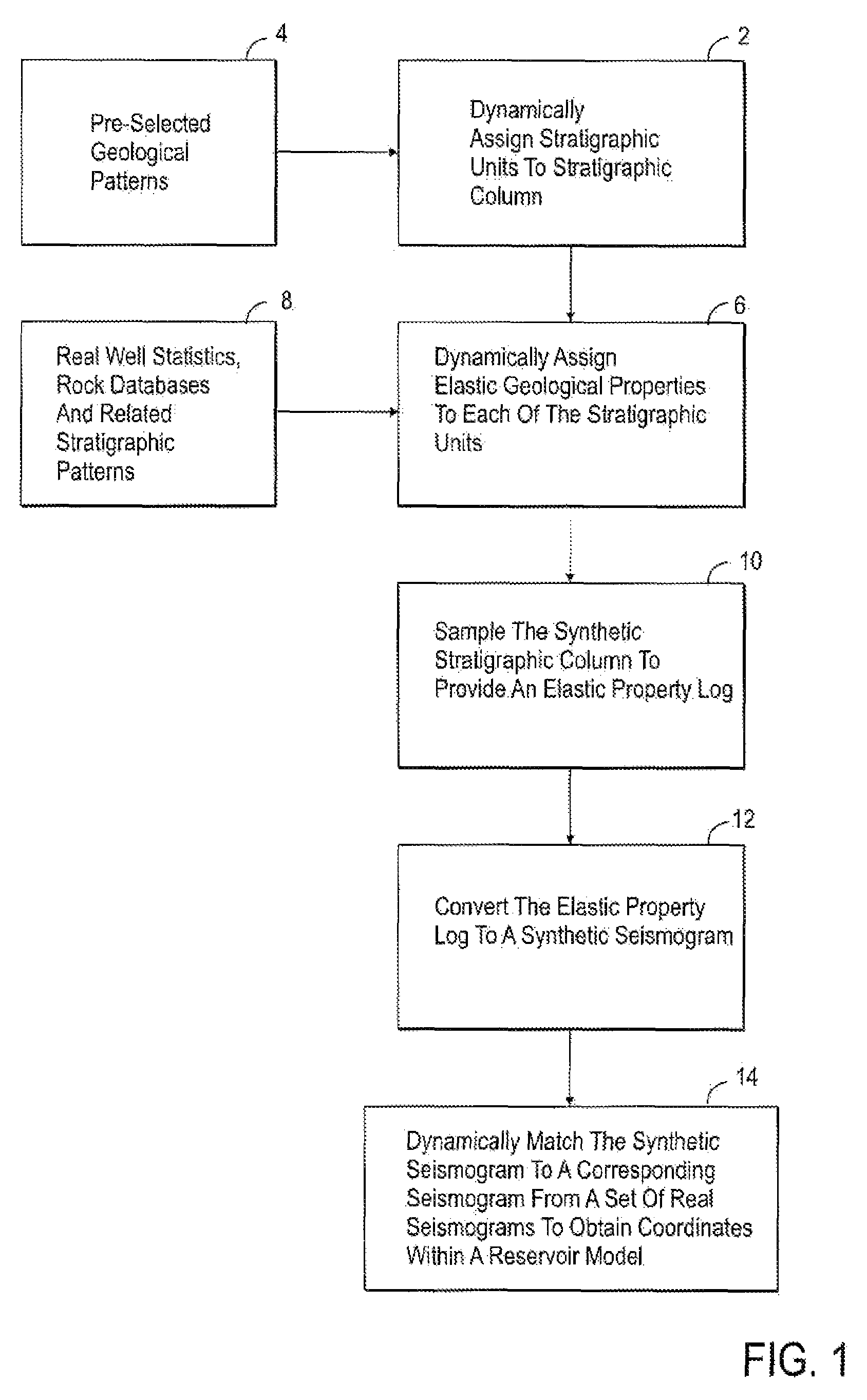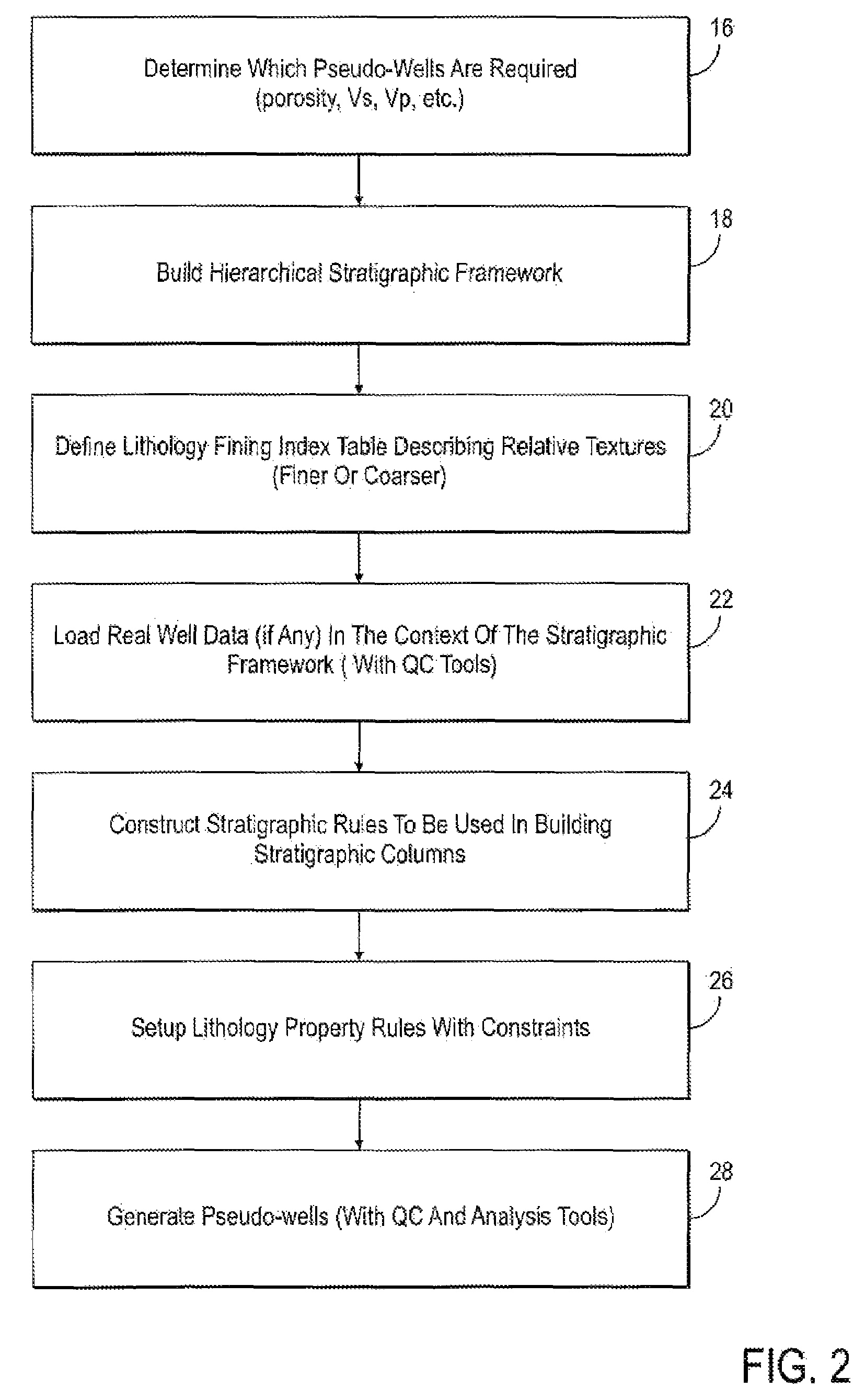Method for generating reservoir models utilizing synthetic stratigraphic columns
a stratigraphic column and reservoir technology, applied in seismology for waterlogging, instruments, borehole/well accessories, etc., can solve the problems of imperfect measurements with a certain level of error, less development wells, and low seismic surveying accuracy
- Summary
- Abstract
- Description
- Claims
- Application Information
AI Technical Summary
Benefits of technology
Problems solved by technology
Method used
Image
Examples
Embodiment Construction
[0051]While this invention is susceptible of embodiments in many different forms, there are shown in the drawings, and will herein be described in detail, preferred embodiments of the invention with the understanding that the present disclosure is to be considered as an exemplification of the principles of the invention and is not intended to limit the broad aspect of the invention to the embodiments illustrated.
[0052]The present invention is an improved method of estimating subsurface reservoir properties and characteristics utilizing geological constraints. The improved method includes utilizing deterministic and probabilistic constraints. The method utilizes a stratigraphic framework which provides a complete label system for each pseudo-well, comprehensive stratigraphic rules and constraints from geological interpretation and realistic property distribution rules.
[0053]The pseudo-wells generated by the improved method can be used in a number of applications. For example, the pse...
PUM
 Login to View More
Login to View More Abstract
Description
Claims
Application Information
 Login to View More
Login to View More - R&D
- Intellectual Property
- Life Sciences
- Materials
- Tech Scout
- Unparalleled Data Quality
- Higher Quality Content
- 60% Fewer Hallucinations
Browse by: Latest US Patents, China's latest patents, Technical Efficacy Thesaurus, Application Domain, Technology Topic, Popular Technical Reports.
© 2025 PatSnap. All rights reserved.Legal|Privacy policy|Modern Slavery Act Transparency Statement|Sitemap|About US| Contact US: help@patsnap.com



